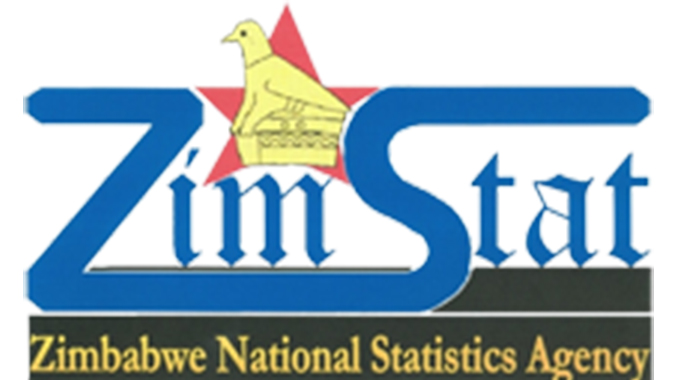Government measures contain inflation

Prosper Ndlovu, Business Editor
CAPTAINS of industry have applauded the persistent downward spiral in month-on-month inflation since July 2022, which is now starting to trickle down to annual inflation as for the second month in a row, annual inflation has declined.
According to the Zimbabwe National Statistics Agency (ZimStat), the country annual inflation rate for October 2022 decreased to 268,8 percent from 280,4 percent in September 2022, shedding 11,6 percentage points.

Although annual inflation is still relatively high, the Confederation of Zimbabwe Industries (CZI) says the steady decline is a welcome development and suggests that authorities should maintain the tight liquidity conditions to sustain the downward trajectory.
Consumers have also started feeling the positive impact as pricing of goods and services including fuel, has stabilised in recent months with several major retail shops adjusting downwards prices of basics such as cooking oil, beverages and bread.
Month-on-month inflation has been on the decline since its peak of 30,7 percent in June 2022, according to official figures and its continuous decline confirms that the cocktail of measures instituted by the Government are having a positive impact in curbing inflation, said CZI in its latest currency and inflation update.
Already, month-on-month inflation rate in October 2022 stood at 3,2 percent, shedding 0,3 percentage points on the September 2022 rate of 3,5 percent.
The Treasury has said it expects annual inflation to average 166,7 percent by the end of this year and hopes to contain monthly inflation to three percent by next month.
“Single digit month-on-month inflation brings relative stability in the economy, especially if on a sustainable downward trajectory,” says the largest industry lobby group.
Given that Zimbabwe is using a dual currency regime with most businesses benchmarking prices against the parallel market rate, the recent drop in parallel market rates is being expressed in relative stable prices.
“Since August 2022, the parallel market exchange rate premium was declining as the official exchange rate and the parallel market rate are heading towards convergence,” said CZI.
“Such a convergence is great for the economy as it will bring stability and certainty in the economy. If sustained, the convergence is also expected to discourage businesses and individuals from engaging in risky and illegal parallel market activities.
What is contributing to the decline in month-on-month inflation?
According to CZI, among the major factors playing a critical role in stabilising the parallel market rate, which was causing distortions and instability in the economy, is the introduction of gold coins by the Central Bank, which has helped mop-up excess liquidity by creating an alternative store of value.
Increased due diligence on payment of Government suppliers, hiking of interest rates to 200 percent and slowdown in money supply, have also helped restore sanity, said CZI.
However, the industry body says there are some goods and services that are still above the average annual inflation rate, stressing the need to further review prevailing pricing models to ease the cost burden on ordinary people.
“Most of the goods and services that are above average annual inflation of 268,8 percent are necessities. Electricity, transport services and hospital services are critical services,” it said.
“If the prices increase massively the vulnerable groups will be greatly affected. Even food inflation is way above the average annual inflation, which reinforces the point that the poor are being hit hard by inflation.”
Inflation and business competitiveness
While positive strides are being made in bringing about macro-economic stability and arresting price distortions, CZI has said Zimbabwe’s inflation challenge has become a threat to regional competitiveness of locally produced goods and services.
This, it adds, has been compounded by the adverse impact of the Russia-Ukraine war on the global economy at large, as well as the effects of the structural challenges due to the Covid-19 pandemic.
“As the effects of these global geopolitical developments starts to wane, countries are experiencing a decline in inflation. Zimbabwe is no exception as its annual inflation is declining,” said the industry body.
“However, the annual inflation rate for Zimbabwe is still extremely very high compared to its regional counterparts. This still emphasises the presence of strong endogenous factors that have been driving inflation in Zimbabwe.”
For instance, CZI notes that in September 2022, Zimbabwe’s annual inflation was 15 times higher than Angola, the country with the second highest inflation in Sadc.
“The inflationary environment weighs down on Zimbabwe’s competitiveness as domestic prices of goods end up being higher compared to what low inflation countries are selling at.”
Going forward, CZI has urged authorities to sustain the prevailing stability through taming excess liquidity in the main, as this is the biggest trigger of parallel market activity.
“The responsiveness of the parallel market to tightening of liquidity also shows that the parallel market behaviour is largely responsive to liquidity conditions in the economy as reflected by the growth in money supply,” said CZI.

“This means that the threat to stability are the liquidity pressures that would be expected going forward. The upcoming agriculture season, for example, will require Government to support farmers through the various schemes in existence.
“There is potential for the creation of excess liquidity which can feed the growth on money supply if payments are not carefully calibrated. The ability to crowd in the private sector as well as general ability to fund agriculture in a non-inflationary manner will determine the inflation trajectory in the coming months.”
CZI further noted that the upcoming 2023 harmonised elections also have the potential to be a source of money supply growth unless elections are funded from the budget and payments are also carefully calibrated so as not to upset the market.









Comments